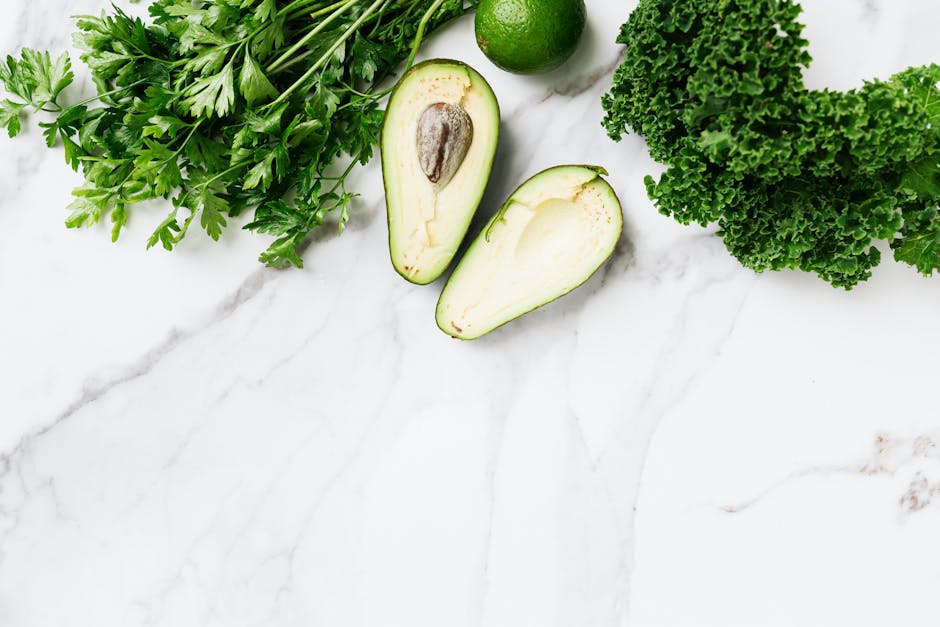Tired of endless cardio sessions and restrictive diets with minimal results? Imagine effortlessly boosting your metabolism and shedding those extra pounds while enjoying delicious, nutrient-packed smoothies. This isn’t about quick fixes or fad diets; it’s about integrating a sustainable, enjoyable approach to weight management that supports your overall health and fitness goals.
We’re diving into the world of fat-burning smoothie recipes—a powerful tool to help you achieve a leaner, healthier physique and enhance your energy levels.
The importance of a balanced diet, rich in protein, healthy fats, and complex carbohydrates, cannot be overstated when aiming for optimal body composition. These smoothies are designed to be a significant part of a healthy eating plan, supporting your calorie deficit and fueling your workouts. They’re packed with essential vitamins and minerals, promoting satiety and reducing cravings.
Remember, this isn’t a “magic bullet”; successful weight loss requires a holistic approach, combining a balanced diet with regular exercise. One common misconception is that simply consuming smoothies will lead to significant fat loss; it’s crucial to understand that these recipes are most effective as part of a comprehensive fitness regime, alongside strength training for muscle building and cardiovascular exercises for improving endurance.
In this article, we’ll explore a collection of delicious and effective fat-burning smoothie recipes, tailored to suit various dietary needs and preferences. We’ll break down the science behind the ingredients, explaining how they contribute to metabolic rate and fat oxidation. You’ll learn how to incorporate these smoothies into your daily routine, optimize your macronutrient intake (protein, carbohydrates, and fats), and create a personalized plan to achieve your weight loss targets.
Get ready to transform your body and your relationship with healthy eating—one delicious smoothie at a time!
Burn Fat, Build Muscle: Smoothie Style

Let’s be clear: there’s no magic bullet for fat loss. Sustainable weight management requires a holistic approach combining a balanced diet with consistent exercise. While smoothies can certainly be a valuable tool in your arsenal, they are not a replacement for a well-rounded nutritional plan and a dedicated fitness regimen.
Think of it like this: smoothies are a supportive teammate, not the whole winning team.
These recipes are designed to be nutrient-dense, providing essential vitamins, minerals, and antioxidants while keeping calorie intake in check. Focus on smoothies rich in protein (Greek yogurt, protein powder) and fiber (berries, spinach, chia seeds) to promote satiety and help manage hunger throughout the day. Research consistently shows that higher protein diets can boost metabolism and increase feelings of fullness, supporting weight loss efforts.
Here’s a sample smoothie recipe: Blend 1 cup frozen berries, ½ cup spinach, ½ cup Greek yogurt, 1 scoop whey protein powder (choose a low-sugar option), and ½ cup water or unsweetened almond milk. Adjust the liquid to achieve your desired consistency.
But smoothies alone won’t sculpt that physique. You need to incorporate regular strength training. Strength training is crucial not only for fat burning but also for building lean muscle mass.
Muscle tissue burns more calories at rest than fat tissue, boosting your metabolism even when you’re not working out. Aim for at least two to three full-body strength training sessions per week.
Here’s a sample workout routine:
- Squats: 3 sets of 8-12 reps. Maintain proper form: feet shoulder-width apart, chest up, back straight, and squat down until your thighs are parallel to the ground. Avoid rounding your back.
- Push-ups: 3 sets of as many reps as possible (AMRAP). Keep your body in a straight line from head to heels. If needed, modify by performing push-ups against a wall or on your knees.
- Rows: 3 sets of 8-12 reps per arm. Maintain a straight back and pull the weight towards your chest, squeezing your shoulder blades together.
- Plank: Hold for 30-60 seconds, 3 sets. Maintain a straight line from head to heels, engaging your core.
Remember to prioritize proper form over the number of repetitions. Poor form increases your risk of injury, hindering your progress. If you’re unsure about proper form, consult a certified personal trainer.
A common challenge is consistency. Life gets busy, and it’s easy to skip workouts or choose convenience foods over healthy options. To overcome this, plan your workouts ahead of time and prepare your smoothie ingredients in advance.
Find a workout buddy for accountability and motivation.
Another hurdle is unrealistic expectations. Sustainable weight loss is a gradual process. Don’t get discouraged if you don’t see results overnight.
Celebrate your small victories and stay committed to your goals. Remember, consistency and patience are key. You are building a healthier lifestyle, one smoothie and one workout at a time.
5 Essential Smoothie-Making Techniques

Crafting the perfect fat-burning smoothie isn’t just about throwing ingredients together; it’s about mastering techniques that unlock their full potential. Think of your blender as your personal metabolic engine – the better you operate it, the more efficient your results will be.
First, prioritize nutrient timing. Research shows that consuming protein and carbohydrates post-workout aids muscle recovery and replenishes glycogen stores, supporting fat loss efforts. Include ingredients like Greek yogurt, berries, and spinach in your post-workout smoothie for optimal recovery.
Second, master the art of blending. Don’t just pulse; blend thoroughly until you achieve a smooth, consistent texture. Lumps are not only unappetizing but also hinder nutrient absorption.
Start with liquids (like water or unsweetened almond milk) at the bottom, add softer fruits and vegetables, then tougher items like spinach or kale on top. This layering method prevents clogging and ensures even blending.
Third, consider the liquid base. Water is calorie-free, but milk or yogurt adds protein and thickness. Experiment to find your preferred consistency.
However, be mindful of added sugars in flavored milks or yogurts. Opt for unsweetened versions and adjust sweetness with natural alternatives like a touch of honey or stevia if needed. This aligns with the principles of mindful nutrition, crucial for long-term fat loss.
Fourth, don’t underestimate the power of greens. Leafy greens like spinach and kale are nutrient powerhouses, packed with vitamins, minerals, and fiber. They also add volume to your smoothie without significantly increasing calories, promoting satiety and curbing cravings.
Aim to incorporate at least one cup of greens into your daily smoothie.
Finally, embrace experimentation. Don’t be afraid to try new combinations of fruits, vegetables, and healthy fats (like avocado or nuts). Finding flavors you genuinely enjoy will make sticking to your smoothie plan far easier.
Remember consistency is key; think of your smoothie routine as a marathon, not a sprint. Small, consistent changes over time are more sustainable and lead to greater success than drastic, short-lived changes.
Addressing potential challenges: some might find it difficult to incorporate enough greens or find their smoothies too watery. To combat this, gradually increase the amount of greens each day, starting small. Also, experiment with different liquid bases and thickening agents like chia seeds or flaxseed meal.
If you struggle with sticking to your routine, schedule specific times for smoothie preparation and consumption to make it part of your daily rhythm, much like brushing your teeth – a non-negotiable habit.
Incorporating exercise is crucial. Consider a simple, effective routine like this: 30 minutes of brisk walking or jogging three times a week, combined with two days of strength training focusing on major muscle groups (squats, push-ups, rows). Remember proper form to avoid injury – engage your core during exercises, maintain controlled movements, and prioritize quality over quantity.
Starting with 2-3 sets of 10-12 repetitions for each exercise is a good starting point. Gradually increase the weight or resistance as you get stronger. This approach mirrors the concept of progressive overload – continually challenging your muscles to stimulate growth and fat burning.
Fuel Your Fitness: Smoothie Nutrition

Smoothies can be a powerful tool in your fat-burning journey, but they’re not a magic bullet. Think of them as a supportive teammate, not the entire winning strategy. Effective weight management hinges on a holistic approach encompassing both diet and exercise.
These recipes are designed to provide a nutrient-dense, easily digestible fuel source to support your workouts and overall metabolic function.
For optimal results, prioritize smoothies rich in protein and fiber. Protein promotes satiety, helping you feel fuller for longer and reducing cravings, while fiber aids digestion and contributes to a stable blood sugar level, minimizing energy crashes that often lead to overeating. Good sources include Greek yogurt, berries, spinach, chia seeds, and protein powder (whey or plant-based).
Aim for at least 20-30 grams of protein per smoothie.
Let’s talk exercise. High-Intensity Interval Training (HIIT) is particularly effective for fat burning. HIIT involves short bursts of intense exercise followed by brief recovery periods.
This type of training elevates your heart rate significantly, boosting your metabolism and promoting post-exercise oxygen consumption (EPOC), also known as the “afterburn effect,” where your body continues to burn calories even after you’ve finished exercising.
Here’s a sample HIIT workout you can start implementing today: Perform 30 seconds of intense activity like burpees, jumping jacks, or mountain climbers, followed by 30 seconds of rest or low-intensity activity like walking. Repeat this cycle for 8-10 rounds. Remember proper form is crucial to avoid injury.
For burpees, for example, maintain a straight back during the squat and ensure your chest touches the ground before exploding upwards. For jumping jacks, keep your movements controlled and land softly to minimize impact on your joints.
Strength training is another critical component. Building muscle mass increases your resting metabolic rate, meaning you burn more calories even while at rest. Incorporate compound exercises that work multiple muscle groups simultaneously, such as squats, lunges, push-ups, and rows.
Aim for 2-3 sets of 8-12 repetitions for each exercise, focusing on controlled movements and proper form. Remember to challenge yourself progressively – increase weight, reps, or sets as you get stronger.
One common challenge is consistency. Life gets busy, and sticking to both a smoothie diet and a workout routine can feel overwhelming. To combat this, plan your smoothies in advance, prepping ingredients on the weekend to save time during the week.
Similarly, schedule your workouts into your calendar, treating them as non-negotiable appointments. Find a workout buddy for added accountability and motivation.
Another hurdle is boredom. Variety is key! Experiment with different smoothie recipes and workout routines to keep things interesting.
Consider joining a fitness class or trying a new sport to break the monotony. Remember, progress isn’t always linear. There will be days when you don’t feel like working out or might skip a smoothie.
Don’t let setbacks derail your progress. Get back on track as soon as possible; consistency over perfection is the key to long-term success. Think of it as a marathon, not a sprint.
Avoid These Smoothie Diet Pitfalls

So, you’re embarking on a fat-burning smoothie diet journey – fantastic! Smoothies can be a powerful tool for weight management, packed with nutrients and low in calories. But like any diet, pitfalls exist.
Avoiding these common mistakes is crucial for success and preventing frustration.
Pitfall #1: Over-Reliance on Smoothies: While smoothies are great, they shouldn’t be your only source of nutrition. Think of your diet like a car engine – it needs a variety of fuels (macronutrients) to run optimally. Relying solely on smoothies neglects the fiber, micronutrients, and satiety offered by whole foods like vegetables, fruits, lean protein, and whole grains.
Aim for a balanced diet where smoothies supplement, not replace, meals.
Actionable Step: Replace one meal per day with a smoothie initially. Gradually increase the number of smoothie replacements only if you feel satisfied and energetic. Always ensure your smoothie incorporates a balanced blend of protein, healthy fats, and complex carbohydrates.
For example, a smoothie with Greek yogurt, spinach, berries, and a small amount of almond butter provides a more complete nutritional profile than one solely consisting of fruit juice.
Pitfall #2: Ignoring Calorie Intake: Even healthy smoothies can contribute to weight gain if you consume too many calories. A large, calorie-dense smoothie might negate the benefits of your entire day’s healthy eating. Carefully measure ingredients and track your overall daily calorie consumption.
Actionable Step: Use a food scale and a calorie tracking app to monitor your smoothie’s calorie count. Aim for smoothies in the 300-400 calorie range. Choose lower-calorie fruits and vegetables and be mindful of added ingredients like nut butters and sweeteners which can rapidly increase calorie density.
Pitfall #3: Neglecting Exercise: Smoothies aid weight management but aren’t a magic bullet. Weight loss requires a caloric deficit, best achieved through a combination of diet and exercise. Incorporating regular physical activity is essential for building muscle mass, boosting metabolism, and improving overall health.
Think of it as fine-tuning the engine after providing it with the right fuel.
Actionable Step: Incorporate at least 150 minutes of moderate-intensity cardio or 75 minutes of vigorous-intensity cardio per week, as recommended by the American Heart Association. Consider a routine like this (adjust based on your fitness level):
- Monday: 30 minutes brisk walking or cycling
- Tuesday: Strength training (focus on major muscle groups – squats, lunges, push-ups, rows – 3 sets of 8-12 repetitions each)
- Wednesday: Rest or active recovery (yoga, stretching)
- Thursday: 30 minutes HIIT (high-intensity interval training) – alternate short bursts of intense activity with brief rest periods. Proper form is crucial in HIIT to prevent injury; ensure your movements are controlled and avoid bouncing.
- Friday: Strength training (focus on different muscle groups than Tuesday)
- Weekend: Active rest or longer cardio sessions.
Pitfall #4: Lack of Consistency and Patience: Weight loss is a gradual process; don’t get discouraged if you don’t see results immediately. Consistency is key. Stick to your plan, even on challenging days.
Celebrate your small victories and make adjustments as needed.
Actionable Step: Track your progress. Take before-and-after photos, monitor your weight and measurements regularly, and acknowledge your accomplishments. Remember, setbacks are temporary and learning opportunities.
Adjusting your strategy based on what works best for you is essential for long-term success.
Maximize Your Smoothie Results

You’ve crafted your delicious, fat-burning smoothies – that’s a fantastic start! But to truly maximize their impact and unlock your body’s fat-burning potential, you need a comprehensive approach that combines nutrition with effective exercise. Think of it like this: your smoothies are the high-quality fuel, but exercise is the engine that burns that fuel efficiently.
Prioritize Strength Training: Research consistently shows that strength training is crucial for boosting metabolism and building lean muscle mass. Muscle is metabolically active tissue, meaning it burns calories even at rest. Aim for at least two to three strength training sessions per week, targeting all major muscle groups.
Example Workout: A full-body circuit is perfect for efficiency. Perform 3 sets of 10-12 repetitions for each exercise, resting for 60 seconds between sets. Include exercises like squats, push-ups (modified on knees if needed), rows (using resistance bands or dumbbells), lunges, and planks.
Remember proper form is paramount to prevent injuries. Squats should involve a controlled descent, keeping your back straight and chest up. Push-ups should maintain a straight line from head to heels, engaging your core.
Cardiovascular Exercise: Incorporate cardio to further elevate your calorie expenditure and improve cardiovascular health. Aim for at least 150 minutes of moderate-intensity or 75 minutes of vigorous-intensity cardio per week. This could involve brisk walking, jogging, cycling, swimming, or any activity that gets your heart rate up.
HIIT for Efficiency: High-Intensity Interval Training (HIIT) is a particularly effective method for fat burning. HIIT involves short bursts of intense exercise followed by brief recovery periods. A sample HIIT workout could be 30 seconds of sprinting followed by 30 seconds of rest, repeated for 20 minutes.
Remember to listen to your body and adjust the intensity based on your fitness level.
Addressing Common Challenges: Many find it difficult to stick to a consistent workout routine. Lack of time, motivation, or feeling overwhelmed are common hurdles. To overcome these, schedule your workouts like any other important appointment, find a workout buddy for accountability, and start small – even 15 minutes of exercise is better than none.
Celebrate your progress, no matter how small, to maintain motivation. Gradually increase the intensity and duration of your workouts as you get fitter.
Nutrition Timing: While your smoothies are a valuable part of your diet, remember to consume a balanced diet overall. Consider having your smoothie as a pre- or post-workout meal for optimal energy and recovery. Ensure your smoothies are not replacing complete meals, but rather supplementing a balanced intake of protein, carbohydrates, and healthy fats.
Remember, consistency is key. Building healthy habits takes time, so be patient with yourself and celebrate your progress along the way. With dedication and a well-rounded approach, you can successfully leverage your smoothie diet and fitness routine to achieve your goals.
Don’t be afraid to seek professional guidance from a certified personal trainer or registered dietitian to personalize your plan further.
Smoothie Diet: Mindset Matters

Embarking on a smoothie diet, or any diet for that matter, requires more than just blending fruits and vegetables. A successful weight-management journey hinges on a powerful, supportive mindset. Think of your body like a finely tuned machine; you wouldn’t expect it to perform optimally without proper maintenance and fuel, right?
The same applies to achieving your fitness goals.
One of the biggest hurdles is unrealistic expectations. Expecting overnight transformations sets you up for disappointment. Instead, focus on sustainable lifestyle changes.
Start by replacing one meal a day with a nutrient-packed smoothie for a week. Gradually increase this as you feel comfortable and confident in your ability to maintain a balanced diet. Aim for consistency over intensity.
Research shows that mindful eating is crucial for weight management. Before you even reach for that smoothie, take a moment to acknowledge your hunger cues. Are you truly hungry, or are you eating out of boredom or stress?
Paying attention to these signals helps you avoid overconsumption, regardless of whether it’s a healthy smoothie or not.
To maximize the benefits of your smoothie diet, pair it with regular exercise. Aim for at least 150 minutes of moderate-intensity cardio per week, such as brisk walking, cycling, or swimming. This improves cardiovascular health and boosts your metabolism, contributing to fat burning.
Remember to warm up before any exercise and cool down afterwards to prevent injuries.
Incorporate strength training two to three times a week. Focus on compound exercises that work multiple muscle groups simultaneously, such as squats, lunges, push-ups, and rows. For squats, maintain a straight back, engage your core, and lower your hips until your thighs are parallel to the ground.
For push-ups, ensure your body forms a straight line from head to heels, engaging your core to prevent sagging. Aim for 2-3 sets of 8-12 repetitions for each exercise. Proper form is paramount to prevent injuries and maximize results.
Another common challenge is dealing with cravings. If you find yourself yearning for sugary snacks, try incorporating protein and healthy fats into your smoothies. These nutrients will help you feel fuller for longer and reduce cravings.
Adding ingredients like chia seeds, nuts, or Greek yogurt to your smoothies is an excellent way to accomplish this.
Don’t be afraid to seek support. Join a fitness group, find a workout buddy, or consider working with a registered dietitian or personal trainer. Having a support system can make a significant difference in your journey.
Remember, setbacks are part of the process. Don’t let them derail your progress. Learn from them, adjust your strategy, and keep moving forward.
Finally, celebrate your successes! Acknowledge your accomplishments, no matter how small. This positive reinforcement will boost your motivation and help you stay committed to your goals.
Achieving lasting weight management is a marathon, not a sprint. With the right mindset and a balanced approach, you’ll be well on your way to a healthier, happier you.
Conclusion
Incorporating smoothies into your fitness journey offers a powerful tool for achieving your health and physique goals. We explored effective strategies for burning fat and building muscle through carefully crafted smoothie recipes, focusing on nutrient-rich ingredients and optimal macronutrient ratios. Mastering essential smoothie-making techniques ensures you extract maximum benefits from each blend.
Understanding the nutritional value of your ingredients allows for precise fuel optimization, supporting your workouts and recovery. Avoiding common smoothie pitfalls – like excessive sugar or lack of protein – is critical for sustainable success.
Maximizing your results requires a holistic approach; this includes mindful consumption, strategic timing, and a positive mindset. Remember, consistency and patience are key.
While individual results will vary, committing to these strategies will significantly impact your overall health, leading to a leaner physique, increased energy levels, and improved wellbeing. Don’t wait another day; start your smoothie-fueled fitness journey today! Choose a recipe, blend your ingredients, and take that first step towards a healthier, happier you.
Remember, progress, not perfection, is the path to success.
It’s important to consult with a healthcare professional or registered dietitian before making significant dietary changes, particularly if you have any underlying health conditions. You have the power to transform your health and fitness; believe in your ability to achieve your goals.
